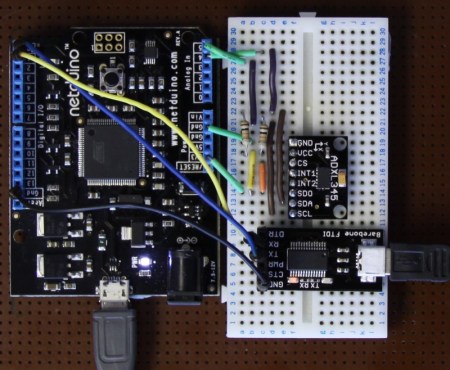If you’ve ever wondered about the use of or theory behind or the use of accelerometers, this tutorial by Love Electronics is a very good resource. In this article, Love takes one through how to hook up an ADXL345 accelerometer and use it with a Netduino processor. Before the subject of hooking everything up is broached, a very good discussion is given on the general theory and operation of accelerometers.
Information is given about installing all the required software and libraries. Additionally, a mini tutorial about writing a “hello” application using the .NET framework is given. Finally, the application gives the [Windows Presentation Foundation] tools necessary to visualize the raw data that the Netduino produces.
One could really start using this processor and accelerometer from scratch with this tutorial and some basic electronics knowledge. This could add a great new feature to your next robot or allow measurement that couldn’t be done with simpler sensors.
















I imagine to test it, the first thing you’d do is move it all around randomly, but how do you do that when its delicately connected to a breadboard and whatever’s on the other end of those USB connectors?
Noticed a typo on first line
“about the use of or theory behind or the use of “
ewww netduino….
@zrzzz: You don’t have to wave it around, you can just gently rotate it 90* each direction and let gravity do the rest.
Cool writeup. I’m making a data aq for my race car using an Arduino Mega, so I don’t get the .Net ease of programming. For a non-programmer C can be a real pain in the ass. People can hate on abstraction all they want, but if they had to do each and every individual task of everything in their life, they’d never get shit done. It would take you an hour to start your car.
“People can hate on abstraction all they want, but if they had to do each and every individual task of everything in their life, they’d never get shit done. It would take you an hour to start your car.” Well said Mike, well said.
So, this seems like overkill. One can configure a 555 to generate passable PWM output based on a variable resistance.
That having been said, it may not have met his needs here for some better reason.